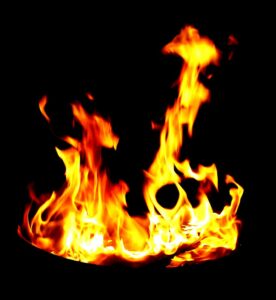
The wildfires aren’t completely controlled at this writing (January 15), but they will be. Estimates of dollar loss are all over the place, the highest I’ve seen is $275 billion. Maybe it’ll be more; let us suppose $400 billion is the cost to replace the buildings and other wealth that has been lost. Let us further suppose that half of that will be covered by insurance from solvent companies. Finally, let us suppose that it is public policy to compensate private individuals and corporations for their losses, even tho no such compensation is provided to victims of common thieves.
So who should pay this $200 billion? Well, the US Federal government has lots of money and can issue bonds as needed to obtain more. But it’s already over $36 trillion in debt, ignoring some big obligations. Ultimately the money will come from federal taxpayers, of whom we may assume there are about 200 million (The total number of personal returns filed appears to be less, but some are joint.) That would work out to $1,000 per taxpayer, tho of course more for those who lack effective lobbyists and less for those who don’t.
But why should this be a Federal matter at all? Why can’t the people of California, or even of Los Angeles County, cover the cost? They’re certainly closer to the situation. The County Assessor tells us that the total assessed value of taxable property in the County is $2.1 trillion. But like other jurisdictions, this involves many fictions, and the actual value of any given property is typically several times the assessed value. In California this seems to be largely due to Proposition 13.
It seems that in LA County, at least for residential parcels, the land value is typically much greater than the improvement value. [edit 1/18/25: This article and link therefrom supports the assertion that “[l]and values in Los Angeles account for an extremely high share of home value.”] What this means is that, if you bought a house and lot for $1,000,000, and the house was destroyed, you actually lost less than $500,000. Combining the Countywide underassessment with the relatively high proportion of value in land, the $2.1 trillion in total assessed value probably includes actual land value greater than $2.1 trillion. And if this value were taxed at, say 1%, it would yield more than $21 billion/year that could fund recovery and rebuilding. (This 1% would be in addition to the much lower effective rate already applied.) There is no need for Federal taxpayers to bear this burden, which benefits primarily owners of very expensive real estate.
This is essentially how San Francisco recovered from its 1906 earthquake, as documented by Mason Gaffney in this article.